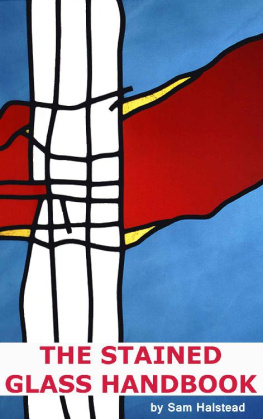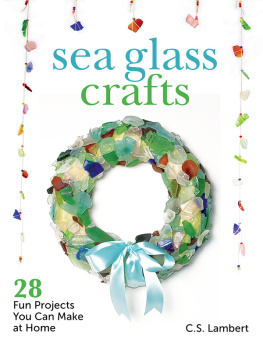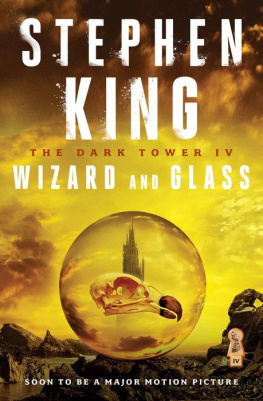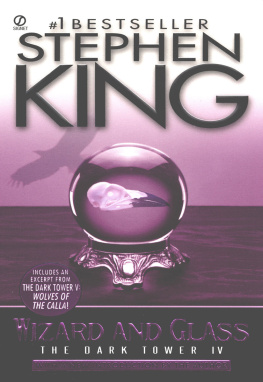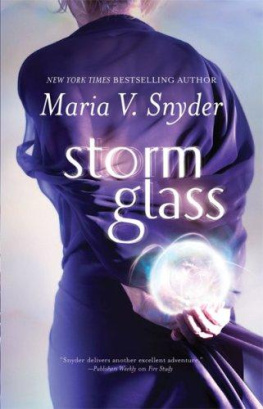Stephen Eskilson - The age of glass: a cultural history of glass in modern and contemporary architecture
Here you can read online Stephen Eskilson - The age of glass: a cultural history of glass in modern and contemporary architecture full text of the book (entire story) in english for free. Download pdf and epub, get meaning, cover and reviews about this ebook. publisher: Bloomsbury UK, genre: Detective and thriller. Description of the work, (preface) as well as reviews are available. Best literature library LitArk.com created for fans of good reading and offers a wide selection of genres:
Romance novel
Science fiction
Adventure
Detective
Science
History
Home and family
Prose
Art
Politics
Computer
Non-fiction
Religion
Business
Children
Humor
Choose a favorite category and find really read worthwhile books. Enjoy immersion in the world of imagination, feel the emotions of the characters or learn something new for yourself, make an fascinating discovery.
- Book:The age of glass: a cultural history of glass in modern and contemporary architecture
- Author:
- Publisher:Bloomsbury UK
- Genre:
- Rating:4 / 5
- Favourites:Add to favourites
- Your mark:
- 80
- 1
- 2
- 3
- 4
- 5
The age of glass: a cultural history of glass in modern and contemporary architecture: summary, description and annotation
We offer to read an annotation, description, summary or preface (depends on what the author of the book "The age of glass: a cultural history of glass in modern and contemporary architecture" wrote himself). If you haven't found the necessary information about the book — write in the comments, we will try to find it.
Stephen Eskilson: author's other books
Who wrote The age of glass: a cultural history of glass in modern and contemporary architecture? Find out the surname, the name of the author of the book and a list of all author's works by series.
The age of glass: a cultural history of glass in modern and contemporary architecture — read online for free the complete book (whole text) full work
Below is the text of the book, divided by pages. System saving the place of the last page read, allows you to conveniently read the book "The age of glass: a cultural history of glass in modern and contemporary architecture" online for free, without having to search again every time where you left off. Put a bookmark, and you can go to the page where you finished reading at any time.
Font size:
Interval:
Bookmark:
THE AGE OF GLASS
THE AGE OF GLASS
A Cultural History of Glass in Modern
and Contemporary Architecture
Stephen Eskilson
Bloomsbury Academic
An imprint of Bloomsbury Publishing Plc

W here to begin? Industrialists surveying the ongoing age of glass have sought to pinpoint their favored substances origin, adding layers of history, nostalgia, and even romance to their product line. For this reason in 1856, Henry Chance, a partner in the eponymous firm that had provided the glass for Londons Crystal Palace, ruminated in a lecture about the roots of window glass: Pompeii, awakened from a slumber of seventeen hundred years, has proved the existence of window glass in the days of the early emperors. In a small chamber, attached to the bathing room of a private dwelling-house, excavated about the year 1763, was found, a window, which,... still held, when it was found, four panes of glass. Tis also true this particular version of the story ends rather less romantically, with a detailed description of the products made available as of 1923 by the Pittsburgh Plate Glass Company.
This book captures the cultural and technological ascension of glass in modern and contemporary architecture. Wedded to the idea that glass is a culturally elastic material with immense symbolic resonance, it traces a series of interwoven threads regarding what glass means and how it has produced and dispersed meaning over the past two centuries. While not immersed in the minutiae of glass technology, it covers the highlights of the industrialization of glass that began centuries ago and continues through to today. Outside of the technological story, there is the role of glass in the stylistic and ideological development of architecture that needs to be considered as well. As glass has crept quietly, if inexorably, into a position of great architectural prominence, we need to sort through some of the events that have gotten us here and examine what the future might bring.
The following text is not proffered as a comprehensive history of glass in architecture; rather, it attempts to engage episodically with some of that historys most defining moments while offering new interpretations of past buildings and the texts that helped to define them. Methodologically diverse, the narrative mixes theoretical analyses and conventional historical takes with close readings of specific buildings. opens up the discussion, laying the groundwork in regard to the pioneering technological and cultural changes that emerged early in the industrial age of glass. From humble shops to the dazzling Paris arcades, glass quickly became a mediator of many aspects of urban space. Additionally, we get our first glimpse of the Crystal Palace, a building that will haunt and inspire future generations of architects.
While much of the work on glass history has focused on transparent sheet glass, in fact one of the most prominent manifestations of urban glazing came in the form of its stained variant. The nineteenth century was a metaphorical sea of stained glass, as the Romantic revival of medieval culture combined with new decorative trends to create strong consumer demand for this quintessentially modern industrial product. Stained glass also played a large role in the developing aesthetics of twentieth-century designers such as Frank Lloyd Wright and Theo van Doesburg, both of whom formulated their own approaches to architecture through experiments with the medium.
Until the electrical light and power industry matured after 1900, windows and the entrance of daylight into buildings were the prime concern of many architects. begins with a reevaluation of the birth of skyscrapers in late-nineteenth-century Chicago, arguing that the horizontal form of the Chicago Window has been wrongly displaced from the core of the emerging modern aesthetic. This section is partnered with an examination of Le Corbusiers later fascination with horizontal windows and their effect on views and interior illumination.
No issue has done more to define the status of glass in the twentieth century than the apparent conflict between the functionalist and the expressionist view of the material that came to the fore early in the century. and detail how this situation came about in both a historiographic and material fashion. In terms of cultural visibility, the glass curtain wallan obsession of the architects who formulated the modern stylehas been burdened with considerable symbolic importance, and its trajectory from utopian dream to banal reality helps to shed further light on the conceptual formation of glass architecture.
Part of the dream of glass architecture since the beginning of the industrial age has been structures created out of glass alone. Glass walls, roofs, and towers shimmering in the sun have provoked many aspirational projects over the years, and investigates structural glass and its gradual evolution over the past century. Sometimes glass walls served as a comforting incubator or signifier of cleanliness, at other times it symbolized wealth and glamour. In contrast, some structural glass started out with much promise but has been consigned to the alleys and basements of history. It is only in the last few decades that the dream of structural glass has become much more of a reality, as new technology has allowed for a wave of innovative buildings.
From the time of the first hothouses for tropical plants, architects have recognized the thermal and hydrologic problems created by great swaths of glass. As the material has proliferated over the skins of countless buildings, various scientific advances have helped to mitigate the effects of glass, while architects have struggled to counteract or block out the sun. With the dawning realization of the extent of glass architectures energy inefficiency beginning in the 1970s, sustainability strategies have come to the fore and green building now dominates the discussion. Can technology save glass architecture from its own astounding success?
concludes the narrative by delving into some of the key moments when glass architecture has intersected with powerful political currents. Be it the transparency of democratic policy or the crystalline hardness of fascist ideology, glass has proven to be a slippery material that has been enlisted to support multiple contradictory belief systems. This chapter also offers a provocative new interpretation of Philip Johnsons Glass House and its relationship to the architecture of the Third Reich.
I would like to thank my long-time editor and friend, Lee Ripley, with whom I first discussed this work. She introduced me to James Thompson, my insightful editor at Bloomsbury Academic. Also at Bloomsbury, Claire Constable and Sophie Tann provided continual editorial assistance. The staff at the Ryerson & Burnham Libraries of the Art Institute of Chicago, especially Autumn Mather, provided valuable research assistance. At Eastern Illinois University, this project bridged the tenures of two Art Department Chairs, David Griffin and Chris Kahler, both of whom were quite supportive of the project. My family, Jordi and our boys, David, Gavi, and Jack, are a constant source of love.
Glass technology
As with so many other materials vital to modern architecture, the technological history of glass begins with a series of breakthroughs that shifted glass manufacture away from its artisanal roots into the urban world of mass production. In the early industrial age, glass served architecture mainly as a utilitarian product: to enclose windows from the elements and admit light while preserving a view outside. For glazing windows there were two technologies in play, blown glass and cast plate glass. Blown glass was itself separated into two processes: one producing crown glass, the other, cylinder glass. Crown, cylinder, and plate: simple enough terminologies except insomuch as many substitute names have been used depending on the country and the era. Just to give one example, blown glass made by the cylinder process was called alternatively broad, spread, or sheet glass in nineteenth-century London and window glass or drawn glass in twentieth-century New York. Mindful of these vagaries in terminology, the industrial history of windows begins with a worker endeavoring to manipulate the molten, liquid mass of silica, lime, sodium oxide, and sodium carbonate that form the raw materials of most architectural glass.
Next pageFont size:
Interval:
Bookmark:
Similar books «The age of glass: a cultural history of glass in modern and contemporary architecture»
Look at similar books to The age of glass: a cultural history of glass in modern and contemporary architecture. We have selected literature similar in name and meaning in the hope of providing readers with more options to find new, interesting, not yet read works.
Discussion, reviews of the book The age of glass: a cultural history of glass in modern and contemporary architecture and just readers' own opinions. Leave your comments, write what you think about the work, its meaning or the main characters. Specify what exactly you liked and what you didn't like, and why you think so.




